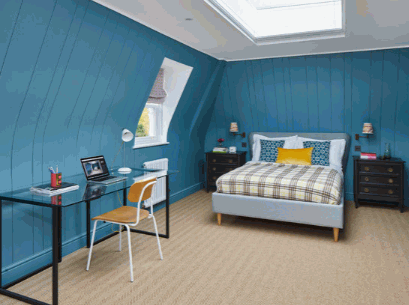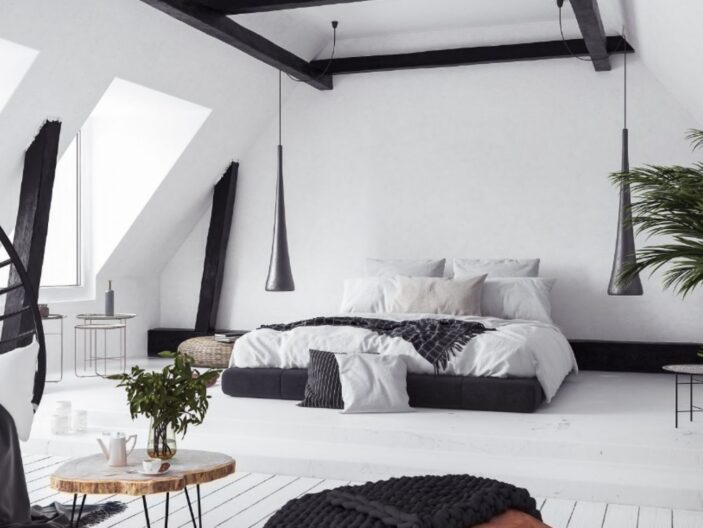Are you considering converting your loft into a bedroom but not sure where to start? We cover everything you need to know about loft conversions.
Discover the benefits of adding extra living space to your property, the different types of conversions available, the costs involved, and the steps required for a successful transformation.
Whether you want to increase the value of your home or create more space for your family, converting your loft could be the perfect solution.
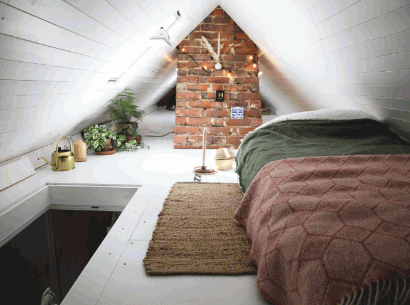
What Is A Loft Conversion?
A loft conversion is a transformative process that involves converting an underused attic space in a house into a functional area, often adding an extra bedroom or office, thereby increasing the property’s overall living space and value.
During a loft conversion, the attic typically undergoes insulation, wiring, and plumbing upgrades to meet building regulations. Common types of spaces transformed include cozy guest rooms, creative studios, or tranquil reading nooks.
In cities like London, where housing space is at a premium, loft conversions have become increasingly popular. Reports from entities like Google LLC and UK housing experts indicate a rising trend in homeowners choosing to maximize their property’s potential through loft conversions.
Learn more: How To Design A Loft Conversion
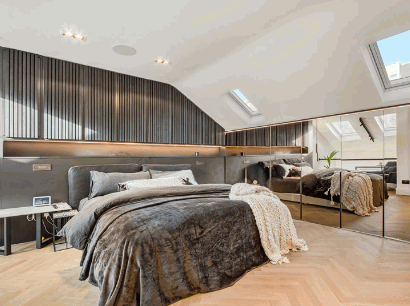
What Are The Benefits Of Converting A Loft To A Bedroom?
Converting a loft into a bedroom offers numerous benefits, such as enhancing the living space, increasing property value, and providing a cost-effective solution to moving to a larger house.
Increases Living Space
One of the primary benefits of loft conversion is the significant increase in living space it provides, turning previously unused areas into functional rooms such as an extra bedroom or home office.
Maximizing space in a house through loft conversions not only enhances its capacity for personalized living but also boosts the overall utility of the property. A well-designed loft conversion can add value to a home by creating versatile living spaces.
In terms of optimizing space for functionality, there are various design approaches that can be considered. Temporary dividers, such as sliding doors or partitions, offer flexibility by allowing rooms to be opened up or closed off as needed.
Alternatively, permanent walls can be strategically placed to define separate areas within the loft, providing privacy and structure to the space while maintaining a cohesive design aesthetic.
Adds Value To The Property
A well-executed loft conversion can substantially add value to your property, often increasing its market price by a significant margin.
Factors such as location, size, layout, and overall condition of the property also play a crucial role in determining its value.
When considering property value enhancement, entities like Google LLC offer online resources and tools to research market trends and comparables.
Platforms like Planning Portal provide guidelines and regulations on permitted development rights and planning permissions, helping property owners make informed decisions to maximize their asset’s worth.
Cost-Effective Alternative To Moving
Converting a loft is a cost-effective alternative to moving to a new house, offering a more affordable solution to gaining additional living space without the high costs associated with buying a larger property.
By utilizing the existing space in your home, a loft conversion can be a smart investment, as it typically costs less than moving to a new, larger property.
Cost savings come not only from avoiding hefty real estate fees and moving expenses but also from the potential increase in the value of your current home. Companies like Blinds.com offer budget-friendly window treatments, while EasyClosets provides customizable storage solutions, helping you maximize space and minimize costs during the conversion process.
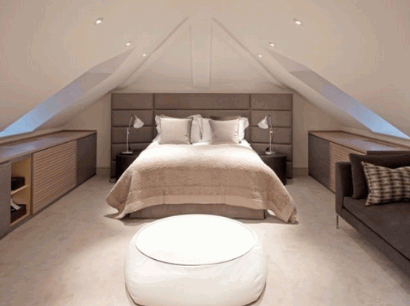
What Are The Different Types Of Loft Conversions?
There are several types of loft conversions, each offering unique design and functional benefits to maximize the usage of attic space, including Dormer, Mansard, Hip to Gable, and Velux conversions.
Dormer Conversion
A Dormer conversion involves extending the existing roof to create additional headroom and floor space, making it one of the most popular types of loft conversions due to its straightforward design and versatility.
One of the key architectural aspects of Dormer conversions is the way they seamlessly blend with the existing roof structure, maintaining the aesthetic appeal of the house.
By adding Dormer windows, natural light can flood into the newly created space, enhancing the overall ambiance and functionality of the room.
Homeowners looking for design inspirations can turn to platforms like Houzz, where they can explore a wide range of creative ideas and examples of successful Dormer conversion projects.
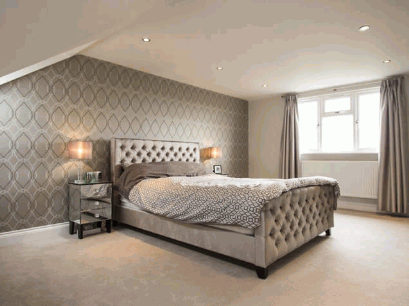
Mansard Conversion
Mansard conversions are extensive projects that involve altering the roof’s structure to provide almost vertical walls and a flat roof, maximizing the available space within the loft.
This style of conversion originates from French architect François Mansart, and it has become popular in urban areas like London for adding extra living areas to properties without altering the building’s footprint.
By creating additional headroom and space, these conversions often result in bright and spacious living areas that can significantly increase property value. Due to the complexity of the structural changes involved, Mansard conversions require careful planning and expertise to ensure they meet building regulations and are structurally sound.
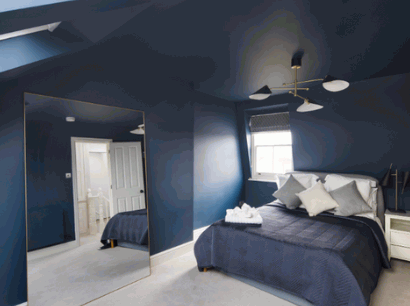
Hip Gable Conversion
Hip-to-Gable conversions are ideal for houses with hipped roofs, involving the extension of the roof’s ridge to create a gable end, thereby increasing both headroom and floor space.
This type of conversion is particularly beneficial in situations where homeowners desire to maximize their living space or add an extra room without the cost and inconvenience of a full extension. By transforming underutilized attic space into functional rooms, Hip-to-gable conversions enhance the overall utility and value of the property.
In terms of blending these modifications with the existing architectural style, many homeowners turn to platforms like Pinterest for inspiration. Popular design ideas include incorporating dormer windows for additional natural light, creating cozy reading nooks in the newly created space, or adding picturesque window seats that align well with the charm of the original structure.
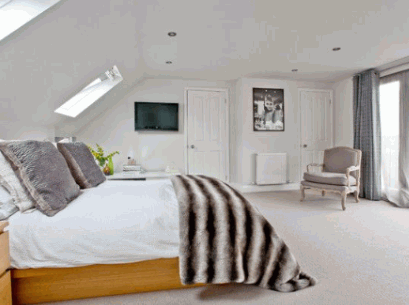
Velux Conversion
Velux conversions, also known as roof light conversions, are the least intrusive type of loft conversion, involving the installation of Velux windows into the existing roof structure to bring in natural light.
These conversions offer numerous advantages, with one of the key benefits being the enhancement of natural light within the attic space. By introducing Velux windows, homeowners can transform dim and dark areas into well-lit, inviting spaces that feel more open and airy.
Velux windows also provide a means of improving ventilation, allowing fresh air to circulate effectively throughout the converted loft. This can be particularly beneficial for maintaining a comfortable and healthy living environment, reducing the risk of dampness and mold formation.
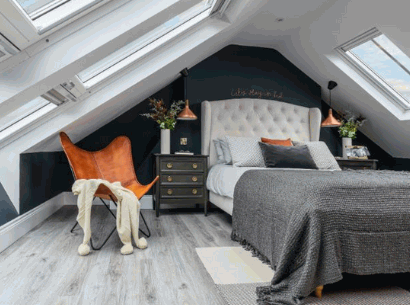
How Much Does A Loft Conversion To A Bedroom Cost?
The cost of converting a loft into a bedroom can vary widely, with several factors influencing the total price, such as the type of conversion, the size of the space, and the design specifications.
Factors That Affect Cost
Several factors can affect the cost of a loft conversion, including the type of conversion, the size of the loft, the quality of materials used, and the complexity of the design.
When considering the type of conversion, options like a dormer, mansard, or hip-to-gable can have varying costs. For instance, a dormer conversion tends to be more affordable compared to a mansard due to the complexity of construction involved.
The size of the loft is crucial as a larger space will require more materials and labor, leading to higher costs. Quality materials like insulation, windows, and flooring can significantly impact the overall cost, as superior materials generally come with a higher price tag.
The complexity of the design, such as adding unique features like skylights or custom storage solutions, can add to the expenses. It’s important to factor in planning and permissions from entities like the Planning Portal, as delays in approvals can prolong the project timeline, resulting in additional labor costs and potentially affecting material prices due to market fluctuations.
Average Cost Of A Loft Conversion To A Bedroom
The average cost of converting a loft into a bedroom typically ranges from £20,000 to £60,000, depending on the specific requirements and the type of conversion chosen.
For example, a simple roof light conversion, which involves adding windows to the existing roof structure, tends to be on the lower end of the cost spectrum. This type of conversion may cost around £20,000 to £30,000.
On the other hand, a dormer loft conversion, which requires the creation of additional headroom by extending the roof, can be more expensive. Such conversions usually range from £40,000 to £60,000, considering the extra structural work involved.
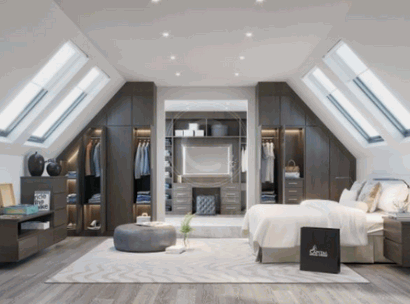
What Are The Steps To Convert A Loft To A Bedroom?
Converting a loft into a bedroom involves several crucial steps, each phase requiring careful planning and execution to ensure a successful transformation.
Planning And Design
The planning and design phase is critical in a loft conversion, requiring comprehensive blueprints and design plans to ensure that the new space meets your needs and complies with building regulations.
Professional design services play a crucial role in this phase, as they bring expertise in creating functional and aesthetically pleasing layouts. Architects, with their knowledge of structural integrity and space utilization, can help optimize the loft space efficiently.
Tools like EasyClosets become critical for organizing and maximizing storage solutions, ensuring that every inch of the newly converted space is utilized effectively. By integrating these elements into the planning process, homeowners can achieve a loft conversion that not only looks great but also functions seamlessly.
Obtaining Necessary Permissions
Obtaining the necessary permissions is a crucial step in the loft conversion process, involving applications for building regulations approval and planning permissions where required.
Local authorities play a pivotal role in reviewing and approving applications for building regulations and planning permissions, ensuring that construction work meets safety and environmental standards. Platforms like the Planning Portal can be valuable resources in this process, offering guidance on the specific requirements and documentation needed for each type of permission. By using these platforms, homeowners can access information on permitted development rights, find relevant forms, and submit applications electronically, streamlining the approval process. This not only saves time but also helps in avoiding common pitfalls and delays often associated with improper submissions.
Construction And Installation
The construction and installation phase involves the physical transformation of the loft space, including structural modifications, insulation, and the installation of windows and other essential elements.
This crucial phase requires meticulous planning to ensure that the loft conversion project adheres to building regulations and safety standards. Experienced professionals play a vital role in managing the complexities of structural changes and coordinating the installation of Velux Loft Conversion windows for optimal natural light and ventilation.
Skilled contractors prioritize efficient insulation solutions to enhance energy efficiency and create a comfortable living space in the newly converted loft. Employing quality products and services, such as those offered by reputable entities like Velux Loft Conversion, can significantly impact the overall success and longevity of the project.
Finishing Touches
The finishing touches phase is where the loft conversion comes to life, involving interior design, furnishing, and decorating to create a functional and aesthetically pleasing bedroom space.
In terms of designing the bedroom space in a loft conversion, it’s essential to consider various design ideas that can maximize both space and style. Opting for multi-functional furniture like temporary dividers can provide privacy without compromising on the overall aesthetics. Selecting the right furnishings, such as stylish blinds from Blinds.com, can enhance the natural light while preserving comfort and coziness. These small details play a significant role in transforming the loft into a personalized retreat, blending functionality with visual appeal.
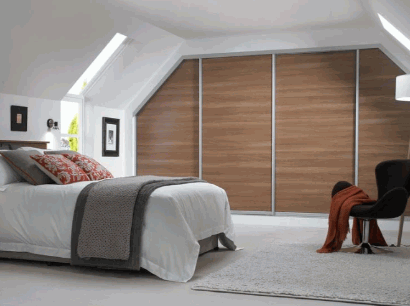
How Long Does It Take To Convert A Loft To A Bedroom?
The time it takes to convert a loft into a bedroom can vary depending on the complexity of the project, but on average, it usually takes between 6 to 8 weeks to complete.
The preliminary stage involves surveying the loft space to assess its suitability for conversion and obtaining any necessary planning permissions. This step typically takes 1-2 weeks. Then comes the design phase, which involves creating detailed drawings and plans for the conversion. This stage can span from 2-4 weeks. Subsequently, the actual construction phase kicks off, lasting about 4-6 weeks depending on the scale of work involved. Delays can occur due to unforeseen structural issues, changes in design, or supply chain disruptions. Efficient project management by a professional team is crucial to ensure a smooth and timely conversion process.
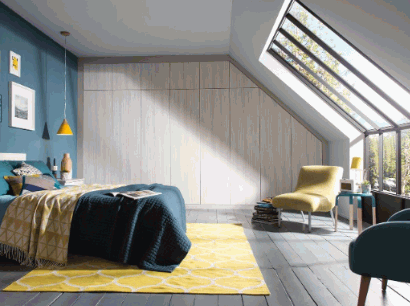
What Are The Considerations Before Converting A Loft To A Bedroom?
Before converting a loft into a bedroom, several important considerations need to be addressed to ensure the project is feasible and successful.
Structural Integrity Of The Property
Evaluating the structural integrity of the property is essential before undertaking a loft conversion, ensuring that the existing framework can support the additional load and modifications.
Professional structural assessments play a crucial role in identifying any weaknesses or deficiencies in the building’s structure, helping homeowners make informed decisions about necessary reinforcements. Through detailed inspections and analysis, Conversion Specialists can determine if additional support beams, wall reinforcements, or foundation upgrades are needed for a successful and safe loft conversion.
Building Regulations And Planning Permissions
Adhering to building regulations and obtaining the necessary planning permissions are crucial steps in the loft conversion process to ensure compliance with local laws and safety standards.
In terms of permissions, there are primarily two types to consider: planning permission and building regulations approval. Planning permission is required to assess how your proposed changes align with the local development plan, considering aspects like the building’s appearance and its impact on the neighborhood.
Building regulations approval, on the other hand, focuses on the structural integrity and safety of the construction work. It ensures that the loft conversion meets specific standards related to fire safety, insulation, ventilation, and more.
Local authorities play a significant role in this process, as they review and approve applications for both permissions. They ensure that your project complies with all relevant regulations and guidelines, contributing to the overall safety and sustainability of the building.
For guidance and assistance during this process, entities like the Planning Portal offer valuable resources. They provide information on the necessary steps, requirements, and application processes, helping homeowners navigate through the complexities of obtaining permissions for their loft conversions.
Accessibility And Safety
Ensuring accessibility and safety is paramount in a loft conversion, requiring thoughtful design and adherence to safety standards to create a secure and functional living space.
When undertaking a loft conversion, it’s crucial to consider various accessibility considerations for individuals of all abilities. Installing features like ramps, wider doorways, and stairlifts can greatly enhance the ease of movement throughout the space. Safety features such as smoke detectors, handrails, and emergency exits should be carefully integrated to ensure a secure environment.
Compliance with building regulations is essential to guarantee that the loft conversion meets the necessary standards for safety and accessibility.
Budget And Time Constraints
Budget and time constraints are important factors to consider before embarking on a loft conversion, requiring careful planning and financial management to ensure the project stays within the allocated resources and timeline.
One essential strategy for effective budget planning is to create a detailed list of all expenses involved in the loft conversion, including materials, labor costs, permits, and any unforeseen contingencies. By identifying cost-saving opportunities such as purchasing materials in bulk or during sales, you can significantly reduce expenses while maintaining quality. Utilizing tools like budgeting apps or services like Amazon Associate can provide valuable insights and resources for financial planning. Incorporating efficient time management techniques, such as setting realistic deadlines and milestones, can help streamline the project workflow and prevent costly delays.
